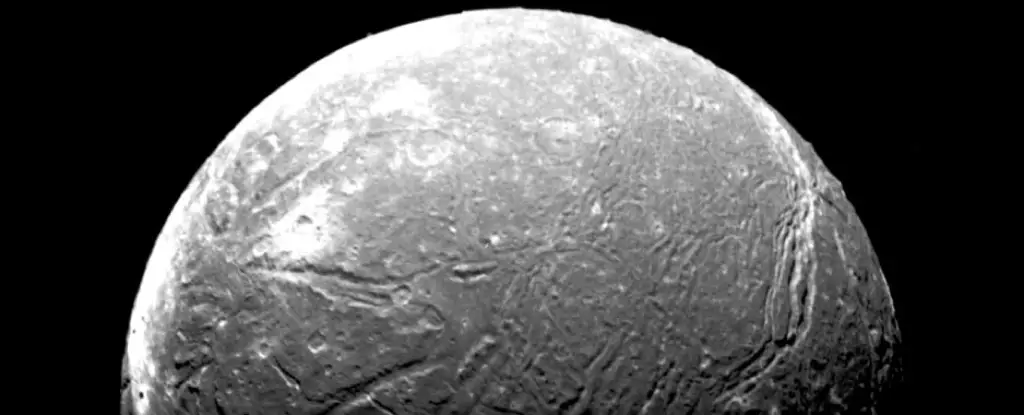Ariel, one of the five moons of Uranus, stands out for its icy surface and various geological features. Discovered in 1851 by William Lassell, Ariel showcases a mix of canyons, ridges, faults, and valleys, all driven primarily by tectonic activities. Moreover, cryovolcanism plays a crucial role in reshaping the surface of Ariel, leading to it having the brightest surface among Uranus’ moons. The recent observations from the James Webb Space Telescope (JWST) have shed light on the presence of significant amounts of carbon dioxide ice on Ariel’s surface, particularly concentrated on the trailing hemisphere.
The detection of carbon dioxide ice on Ariel’s surface has puzzled scientists, given the planet’s significant distance from the Sun in the Uranian system. Normally, at such distances, carbon dioxide would turn into a gas and dissipate into space rather than freeze. The presence of such icy deposits, especially on the trailing edge of features moving away from the orbital direction, has sparked theories about the existence of an underground ocean on Ariel. This hypothesis gains strength from the comparative analysis of Ariel’s spectral data with lab-based findings, revealing high concentrations of carbon dioxide and even traces of carbon monoxide.
While the prevailing theory previously attributed the presence of carbon dioxide on Ariel’s surface to interactions with charged particles in Uranus’ magnetosphere through radiolysis, the recent JWST observations have hinted at a different explanation. The signals from carbonate minerals, which can only form through the interaction of water with rock, suggest the presence of a subsurface ocean on Ariel. This ocean may be the main source replenishing the carbon dioxide deposits on the moon’s surface. A future space mission to Uranus, focusing on exploring the moons, particularly Ariel, would provide invaluable insights into the origin and composition of these carbon oxides.
Despite the advancements in understanding Ariel’s geological features and the composition of its surface, much remains unknown about this enigmatic moon. With the limited coverage of Ariel’s surface by Voyager 2, there is a pressing need for a dedicated space mission to Uranus to unravel the mysteries surrounding this fascinating moon. The complex network of canyons, fissures, and grooves on Ariel hints at possible pathways to its interior, where the answers to the origin of carbon dioxide deposits lie. A robotic explorer in the Uranian system could provide crucial data to confirm the presence of a subsurface ocean and shed light on the geological processes shaping Ariel’s surface.
Ariel, the moon of Uranus, continues to captivate astronomers and researchers with its distinct geological features and intriguing composition. The recent observations from the James Webb Space Telescope have opened new possibilities regarding the presence of a subsurface ocean and the origin of carbon dioxide ice on Ariel’s surface. As we look towards future space missions to explore the Uranian system, the mysteries of Ariel and its geological history await discovery, offering a deeper understanding of the diverse environments within our solar system.


Leave a Reply